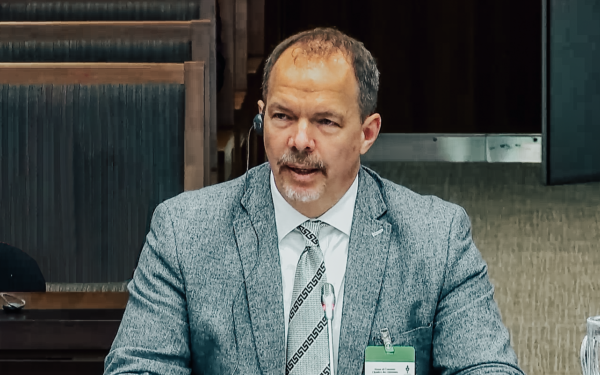Toronto, ON – June 29, 2016 – The power of Internet of things technology colliding with the energy of youth has created some amazing results in two Toronto schools in recent months.
Toronto, ON – June 29, 2016 – The power of Internet of things technology colliding with the energy of youth has created some amazing results in two Toronto schools in recent months. And, if Andy Forest has his way, classrooms across Canada will never be the same again.
Forest is co-founder of SteamLabs. An educator who believes in experiential learning, Forest also develops in-class learning activities he can take to directly to schools to engage kids with technology and make learning fun.
His goal is to empower public school teachers to integrate Internet of Things web technologies in to school projects. “We examined the Ontario curriculum to see where there might be a good fit; where kids were old enough to do something impressive and where there was a need,” Forest explained.
He chose Grade 6, when students learn about Ontario’s energy system, and took his proposed curriculum into two inner-city Toronto schools (Alpha Alternative School and Downtown Vocal Music Academy).
Using principles taught in science, math and art classes, and open data sets from Ontario energy producers, students used recycled materials to create models of the four main energy sources that make up Ontario’s energy mix. They then used an online design program to create models representing energy consumers, and linked those up with real-time, open data from producers. Different coloured LED lights in the models would show who was using power from which source and when, and change when the data changed. Students were then encouraged to draw inferences as to the reasons behind certain changes or consumption patterns.
“Data being available from the power producers made this come alive. It enabled us to get the intelligence of the Internet into a physical project,” said Forest. “Making it project-based means there is a goal. It turns teaching around. It’s telling kids: ‘here’s an awesome goal that you need to accomplish and here are the tools to get there.’”
The energy project teaching guide, Robotic Power System, is the second such guide Forest has produced for educators. Both were funded by the Canadian Internet Registration Authority (CIRA) through its Community Investment Program. Both teaching guides are available on the STEAMLabs website.
“Teaching kids about tech and getting them engaged is vital if we are going to produce the savvy, critical thinkers with the digital skills Canada needs to be globally competitive,” said David Fowler, CIRA’s director of marketing and communications. “CIRA is helping to build a better online Canada, and that includes making the Internet of Things a tool for learning, innovation and human development.”
Said Forest: “There are a number of barriers to teaching tech: it takes time to develop a curriculum, and most teachers are already very busy. Others may not have the personal comfort level with the tools, so they may be scared off or think they can’t adequately convey the information. We want to eliminate those barriers.”
STEAMLabs is sharing its teaching guides with more educators in seminars this month and later this summer. Registration for a four-day session that runs August 15-19, 2016 in Toronto opens tomorrow. http://steamlabs.ca/classes-item/educator-boot-camp/
The cost of the seminar is $500, with an optional 5th day covering youth entrepreneurship skills for $125.
Forest hopes teachers across Canada will be inspired by the guides, create other project-based lesson plans in other disciplines, and share the results widely with their peers. “This is where education needs to go: educators really need to look at interdisciplinary approaches to big topics.”
Additional resources
Video: Teacher interview
Download: Internet of Things teaching kit
Media Availability
- CIRA and STEAMLabs have spokespeople available to speak to this story. Please contact CIRA’s Ryan Saxby Hill at [email protected] or 613-316-2397 to arrange an interview.
- The Toronto District School Board recently featured this initiative in its online News Room: http://www.tdsb.on.ca/media/news/tabid/372/artmid/2750/articleid/744/ele…. Please contact TDSB’s media relations at [email protected] or (416) 395-2721 for board comment or school access.
About CIRA’s Community Investment Program
Through the Community Investment Program, CIRA funds projects that demonstrate the capacity to build a better online Canada. The CIRA team manages Canada’s country code top-level domain on behalf of all Canadians. A Member-based organization, CIRA represents the interests of Canada’s Internet community internationally. To date, the Community Investment Program has supported 78 innovative projects across Canada with grants totalling $3.2 million.
About STEAMLabs
STEAMLabs started in Andy Forest and Marianne Mader’s garage in 2010, and their new downtown location in the Centre for Social Innovation is the largest makerspace in Toronto. It’s a place where curious folks of all ages can go to create items with state-of-the-art tools like 3-D printers, laser cutters, and CNC routers. With their workshops, courses and camps, beginners and professionals alike can learn about digital fabrication, coding, hands-on making and electronics.




